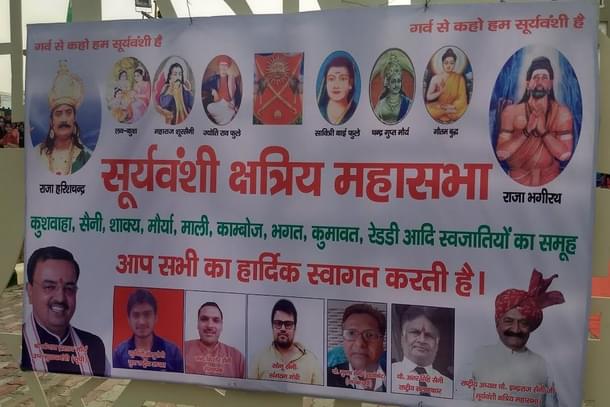News Brief
After Ram Temple Ruling By SC, Suryavanshi Kshatriyas In Ayodhya and Basti Villages End Their 500-Year-Old Vow And Get Their Turbans Back
Swarajya Staff
Nov 19, 2019, 06:14 PM | Updated 06:04 PM IST
Save & read from anywhere!
Bookmark stories for easy access on any device or the Swarajya app.


People from nearly 105 villages around Ayodhya will break a traditional norm after 500 years. Rather, they will make one.
Hailing from villages in and around Ayodhya, men belonging to the Suryavanshi Kshatriya clan will be wearing turbans after the spirit-sapping hiatus of five centuries to celebrate Lord Ram restoring his place, and right in his own Janmabhoomi.
The verdict by Supreme Court of India, which is leading to a quiet celebration of sorts among members of this clan, has brought a sense of justice to this clan in particular.
According to reports published in Dainik Bhaskar and News18.com, the men from the clan living in these villages, including those who live in villages of Basti, will now wear turban and leather shoes, marking the conclusion of a vow they had taken 500 years ago.
It is believed that people of the clan consider themselves the defendants of Ram. The brave men had fought a battle for temple control against the mighty Mughals. They eventually lost the quest for control, but took a vow that until control on the temple is won, they will not wear turbans and shoes.
After the historic Supreme Court verdict, men from these villages are distributing turbans and organising meetings to boost the distribution of turbans.
A News 18 report mentions that a former judge from Allahabad High Court, D P Singh said that the Suryavanshi forefather fought the battle against the Mughals in the sixteenth century, under the guidance of Thakur Gajhsingh.
It was Gajhsingh who took the vow, along with the men of the clan to shun the use of turbans and shoes.
According to a report in Dainik Bhaskar, Basdev Singh, a local told the publication that there are around one lakh people of the clan living in these villages. Nearly 400 turbans have been distributed and efforts are on to keep up the count.
It is said that the Suryavanshis upheld, loyally, the vow and even at weddings, where the menfolk wear traditional headgear, the turban, over the centuries was replaced by "mauri", where the head remains uncovered, and leather footwear with khadau — which is traditional footwear made of wood.
Though the event is limited to a particular community, it reflects how lives across caste diversities are emotionally invested in Ayodhya, Ram and Ram temple for centuries in Uttar Pradesh.
The symbolic value of the distribution of turbans seems huge, as it involves two vital elements associated with warrior pride and that of the male gender in the warrior clan. From nange sarr, nange paanv (bare heads and feet) to turbans and the wearing of footwear made of leather (as was the norm during the Mughal rule), the transition is being marked by festivities such as this.
It also points at the return of happiness and thrill in temple life, after five centuries for the Suryavanshi clan. The deity wasn't given nor getting his place owing to a bitter, bloody and long tussle for control.
The Supreme Court judgement has literally brought colour back to the foreheads of the Suryavanshi Kshatriya clan, and restored festivities. The protest, which was meant to oppose the attack on the temple, has ended.





